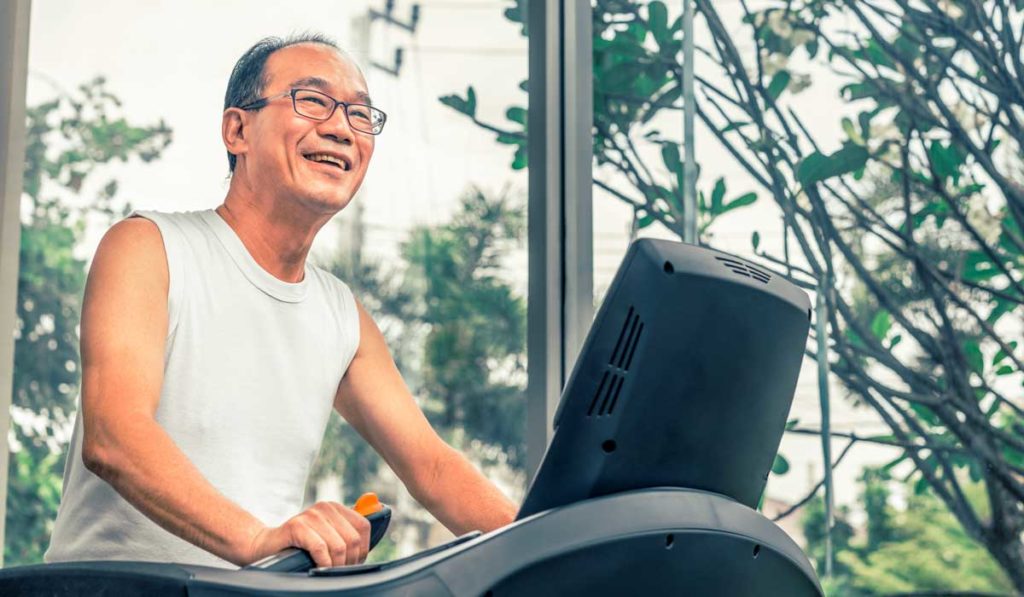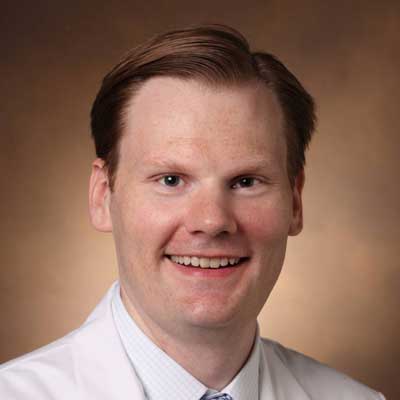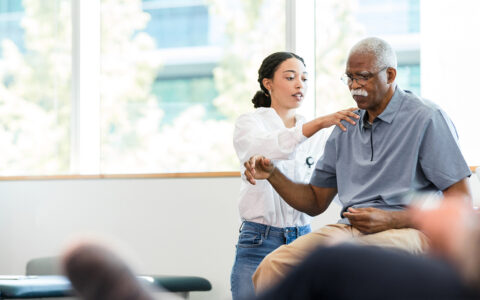Justin Bachmann, M.D. has spent the past five years studying how cardiac rehabilitation programs impact patient populations after various cardiac procedures. There is no question that the benefits are statistically robust – a typical 36-session cardiac rehabilitation regimen can reduce one-year readmission rates by 30 percent following heart transplant, for example.
Lamentably, less than a quarter of eligible patients enroll in cardiac rehabilitation nationally. Bachmann, who is the medical director of the Dayani Center for Health and Wellness at Vanderbilt University Medical Center, believes addressing key barriers could improve uptake.
“Study after study reveals that cardiac rehabilitation is widely underutilized.”
“This is a therapy that has as strong of a benefit for cardiovascular disease patients as any of our major drug therapies, such as aspirin or beta-blockers. You can see with each session that patients are getting stronger, their cardiorespiratory fitness is improving. Functionally they are doing better, are more steady on their feet, and are internalizing the education,” Bachmann said. “But study after study reveals that cardiac rehabilitation is widely underutilized.”
Mining Utilization Patterns
Bachmann’s research uses claims databases to evaluate cardiac rehabilitation utilization and its outcomes. In a new JAMA Cardiology study, Bachmann and colleagues found that cardiac rehabilitation following open-heart valve surgery offers benefits commensurate with those seen after other types of cardiac procedures.
This research, conducted with first author and clinical fellow at Vanderbilt Devin K. Patel, M.D., evaluated claims for 41,369 Medicare patients who underwent heart valve repair or replacement between 2014 and 2015. Despite Medicare coverage for cardiac rehabilitation therapy, participation rates were only 43.2 percent. Once enrolled, however, the “takers” continued on – median attendance was 32 of the 36 sessions offered. Enrollment was associated with a 4.2 percent decrease in one-year mortality risk.
“There is a dose-dependent relationship between the number of sessions they attend and the benefits,” Bachmann said.
Improving Enrollment
Enrollment disparities along ethnic lines were stark in the study, with Asian and Hispanic participation both at 17.9 percent and blacks at 23.7 percent, compared to 45 percent participation among non-Hispanic whites.
Bachmann notes there are innovative programs emerging nationally to increase cardiac rehabilitation program utilization. Some patient populations may benefit from educational and smoking cessation components, he says. Other efforts include linking financial incentives to program participation or offering home-based rehab with a smartwatch as an alternative for patients who cannot attend traditional, hospital-based programs.
An Unfilled Prescription
Bachmann says the chief barriers to utilization are the copays, finding transportation, getting time off work and variable access to cardiac rehabilitation centers. These manifest in marked discrepancies across geographic and socioeconomic lines. Lack of an airtight referral system, long wait times for the initial visit, and schedules that don’t adequately accommodate patients’ lives are also significant disincentives.
Long waits can put rehab on the back burner. Bachmann says current wait times for cardiac rehabilitation appointments are approximately 35 days between hospital discharge and a patient’s first session. The Dayani Center has experimented with a group enrollment process and flexible open gym access, reducing wait time for the first session by 22 percent.
Effective referral systems are also vital to participation. The strength of the referring physician’s endorsement is one of the strongest predictors of patient attendance. Hospitals should refer patients to specific cardiac rehabilitation facilities, generally those closest to where a patient lives, Bachmann says. To close the loop, the center needs to make prompt contact with the patient to schedule the first session. “Once we have them there, the vast majority complete a significant number of sessions,” Bachmann said.





